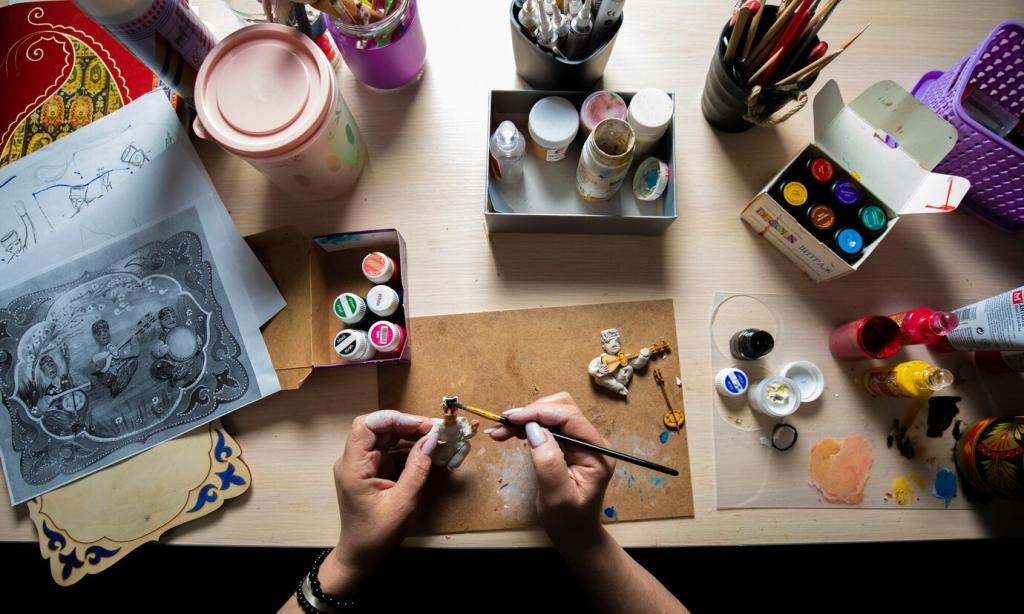Designing Effective Visual Systems in Creative Workshops
Today’s chosen theme: Designing Effective Visual Systems in Creative Workshops. Together, we’ll explore how clear visual languages transform messy collaboration into momentum, turning sticky notes and slides into shared understanding. Jump in, add your thoughts, and subscribe to get future templates and field-tested facilitation prompts.
Build a Shared Visual Language
Choose a compact set of shapes, colors, and line styles that signal roles, priorities, and states. In designing effective visual systems in creative workshops, fewer tokens used consistently will beat any dazzling variety, because clarity and recall drive true group progress.
Build a Shared Visual Language
Place a legend on every canvas and slide so newcomers immediately understand how to participate. When designing effective visual systems in creative workshops, a persistent legend becomes a friendly map that turns uncertainty into action and keeps conversations grounded in a shared vocabulary.
Build a Shared Visual Language
Use scale, contrast, and whitespace to guide attention from headlines to details. Designing effective visual systems in creative workshops means building a visual rhythm that feels musical, so clusters, frames, and annotations cue what matters and what can wait until later.
Choose and Prepare the Right Canvases
Analog or digital, purpose first
Select mediums that match the workshop’s pace, group size, and access. Designing effective visual systems in creative workshops is easier when your canvas fits the moment: paper for intimacy, digital boards for scale, and hybrid setups for distributed teams needing speed and traceability.
Template once, reuse often
Create master frames for briefings, ideation, prioritization, and synthesis, then duplicate them across sessions. When designing effective visual systems in creative workshops, repeatable templates become muscle memory for teams, reducing onboarding time and ensuring evidence accumulates rather than constantly resets.
Inclusive by design
Plan for accessibility with high contrast colors, readable type, and patterns beyond hue alone. In designing effective visual systems in creative workshops, inclusive choices help everyone contribute confidently, from color‑blind participants to remote attendees juggling bandwidth and tiny screens.

Rituals That Activate the System
Kickoff walkthrough and warm-up
Begin with a two-minute tour of the legend, frames, and timing signals, then run a playful warm-up using the same icons. Designing effective visual systems in creative workshops benefits from immediate practice, turning passive orientation into confident participation right from the first exercise.
Facilitation cues that guide flow
Use consistent visual signals for transitions, like a red border for time-boxed sprints and a blue halo for reflection. In designing effective visual systems in creative workshops, these cues reduce verbal chatter, freeing facilitators to coach while participants move intuitively between modes.
Wrap-up, archive, and handover
Close with a summary frame that captures decisions, owners, and next steps, then archive boards using a stable taxonomy. Designing effective visual systems in creative workshops includes stewardship, ensuring that insights survive the room and fuel real-world delivery after the workshop buzz fades.
Iconography, Color, and Meaning
Design icons with constraints
Limit icon stroke weight, angle, and silhouette variety to keep a cohesive feel. When designing effective visual systems in creative workshops, constrained iconography reduces interpretation errors and lets teams read meaning at a glance, even across mixed skill levels and languages.
Color with intention
Assign color roles such as decisions, risks, insights, and ideas, and test combinations for legibility. In designing effective visual systems in creative workshops, purposeful color coding prevents decoration from overwhelming substance and helps highlight progress without causing visual noise or fatigue.
A quick anecdote from the field
During a sprint, two squads used red for both blockers and voting, causing chaos. We retuned the palette mid-session and added patterns for redundancy. Designing effective visual systems in creative workshops sometimes means course-correcting live and explaining changes openly to keep trust intact.
Structure sparks creativity
Deploy frames like How Might We, Jobs-to-Be-Done snapshots, or Assumption Maps to focus ideation. Designing effective visual systems in creative workshops turns sprawling conversations into purposeful exploration by giving ideas a place to land without shrinking imagination or momentum.
Make time visible
Add progress bars, checkpoints, and time-box markers to reduce anxiety and keep flow. In designing effective visual systems in creative workshops, visible time helps participants pace contributions, returning attention to priorities instead of negotiating every minute verbally with conflicting preferences.
Enable synthesis, not clutter
Cluster notes with meta-tags for evidence strength, confidence, and impact, then surface patterns in a summary frame. Designing effective visual systems in creative workshops means turning raw fragments into coherent stories that leaders can act on without losing the nuance of discovery.
Define success signals
Look for fewer clarification questions, faster clustering, and balanced participation across roles. Designing effective visual systems in creative workshops benefits from simple heuristics that reveal whether visuals are truly aiding comprehension or merely decorating a process already straining under complexity.
Run micro-experiments
Try a variant legend, a different grid, or a new color role on one board, not all. When designing effective visual systems in creative workshops, small experiments protect momentum while teaching which changes genuinely increase speed, clarity, and participant confidence across mixed teams.
Create continuity between sessions
Use consistent filenames, snapshot thumbnails, and searchable tags so insights compound across cycles. Designing effective visual systems in creative workshops extends beyond the room, building a durable memory that shortens future kickoffs and keeps teams oriented to decisions already made.
